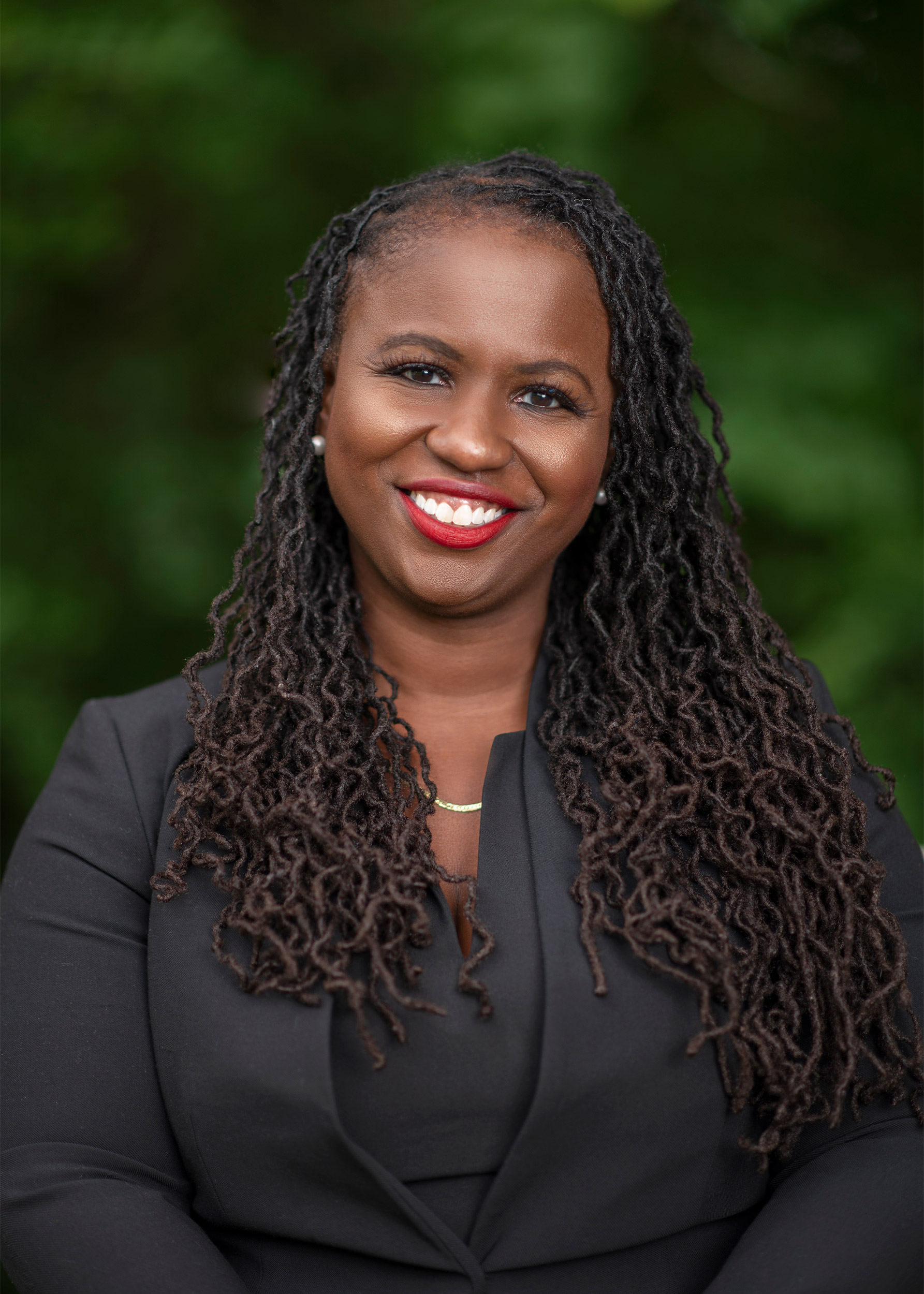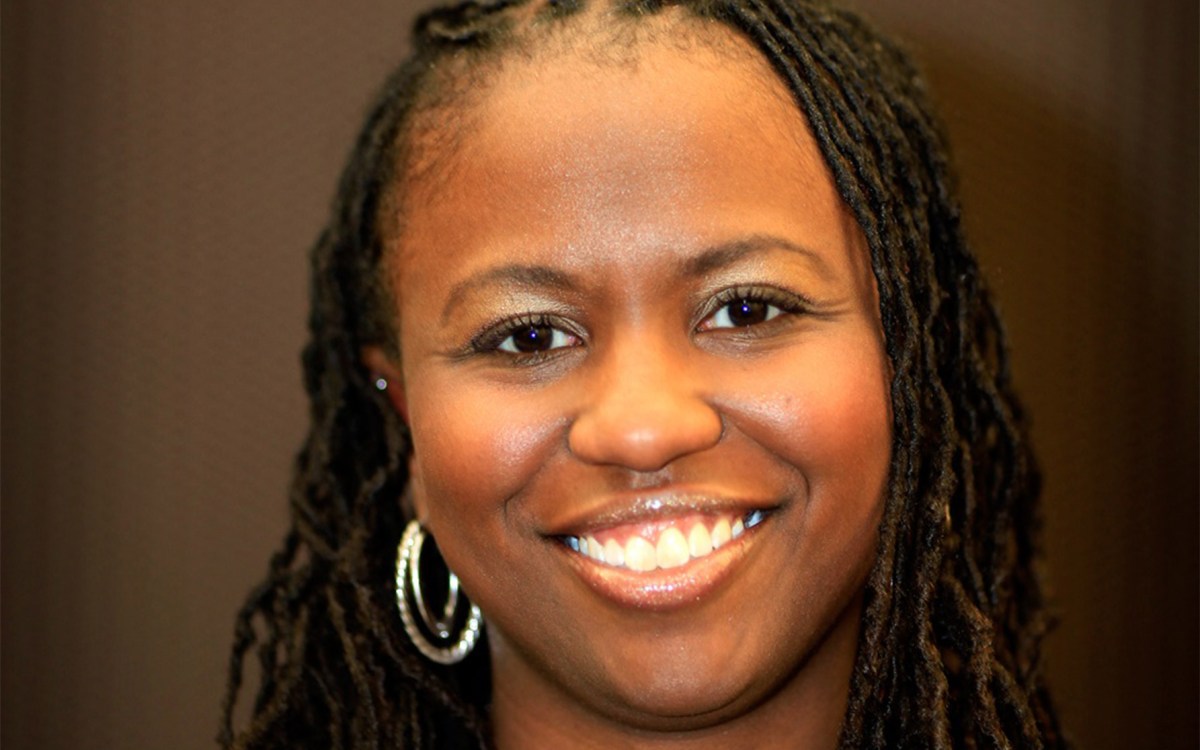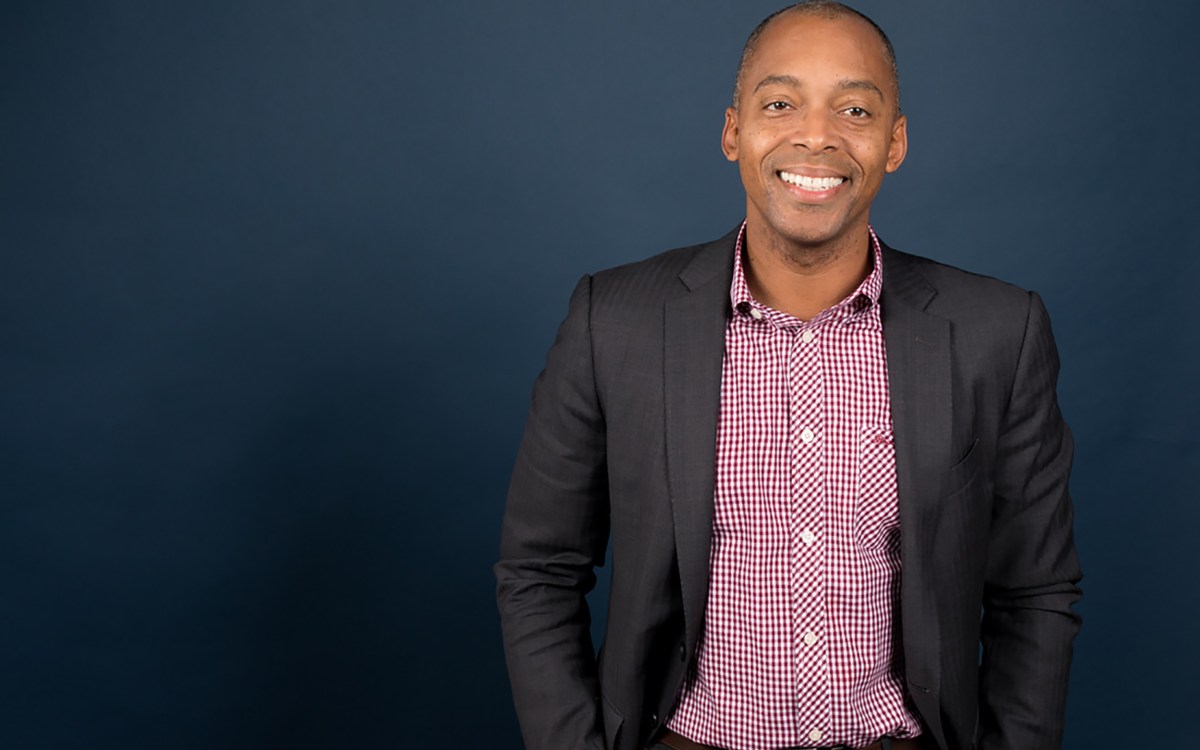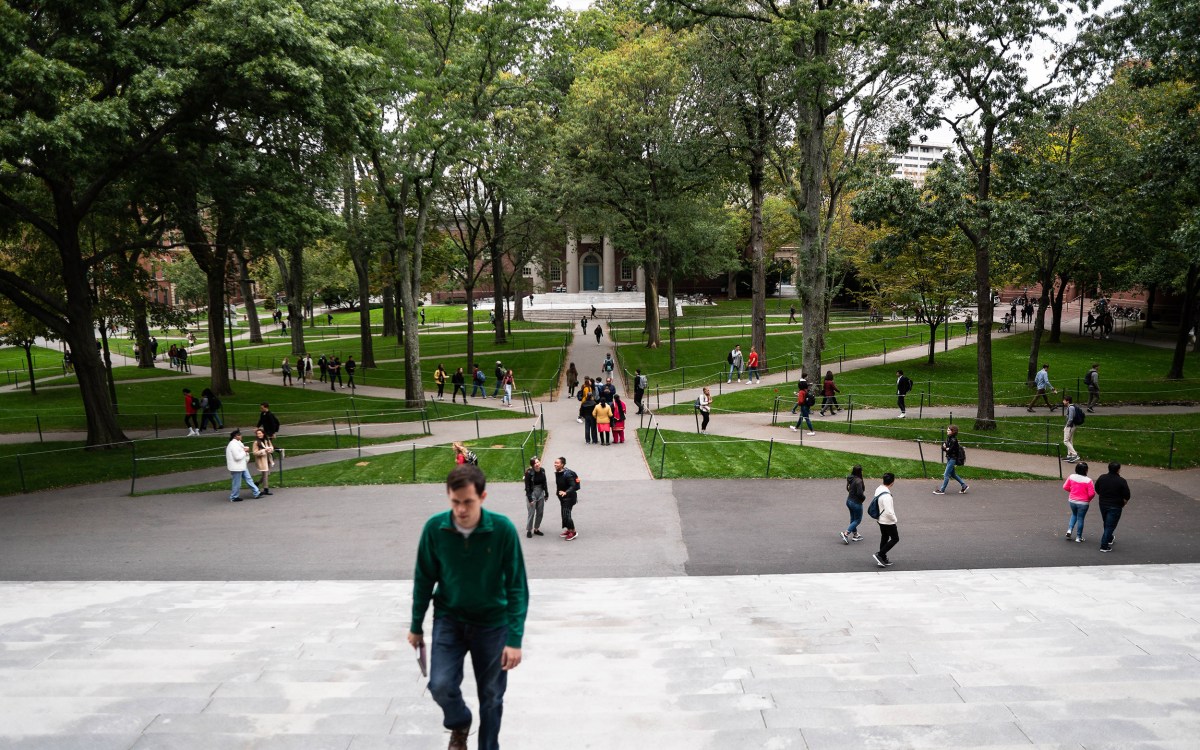Setting measurable goals
New chief diversity and inclusion officer offers impressions after her first two months

Sherri Charleston
Tramaine Seay Photography ©
Sherri Charleston, one of the nation’s leading experts in diversity and higher education, became Harvard’s chief diversity and inclusion officer in August. She arrived from the University of Wisconsin-Madison, where she was assistant vice provost for diversity, equity, and inclusion, and chief affirmative action officer. The Gazette spoke with Charleston to learn more about her first two months on the job, how her academic background in history and the law informs her work, and where she sees opportunities for rigorous, research-informed progress on campus toward making all community members feel welcome and heard.
Q&A
Sherri Charleston
GAZETTE: Tell us about your experience here at Harvard thus far.
CHARLESTON: Early on, I met with one of my new colleagues, who told me that “Harvard is its people, not its buildings.” And I have found that to be absolutely true. I’ve been in Zoom meetings with more than 1,000 people already, and I’ve found that so many have been very warm and welcoming and deeply devoted to diversity and inclusion issues. It has been a wonderful experience for me. It’s been unique starting my time here during a pandemic, but already we’re learning how our new digital environment can actually help us to broaden the reach of the Office for Diversity, Inclusion, and Belonging (ODIB), which I lead. I’m hoping it will enrich the way that we conduct our diversity, equity, inclusion, belonging, and community building efforts after we return to campus.
Harvard of course has a storied history and is already doing a lot to champion diversity, equity, inclusion, and belonging. I’m excited because we have only scratched the surface of what we will be able to achieve together. Part of my work will be to knit together the great work that is already being done — a lot of which is happening at the School and unit level — into a visible strategy with measurable outcomes.
At the outset of their EDI [equity, diversity, and inclusion] journeys, many organizations are able to identify goals, but may struggle to build in systems of measurement and accountability relative to diversity, equity, inclusion, and belonging. A central challenge is often ensuring that we’re applying the same creativity, rigor, resources, and tools for assessment to diversity, equity, inclusion, and belonging strategy as we do to other aspects of our work. We have a real opportunity here at Harvard to pursue organizational excellence in the field with the same level of rigor as we pursue scientific discovery, and then to hold ourselves accountable to ensure that we’re making the visible progress we’ve aspired to, progress that becomes an important part of the very fabric of Harvard. Harvard has the unique ability to make valuable contributions in this area if we can get this right.
GAZETTE: You are a historian trained in U.S. history with a focus on race, women, gender, citizenship, and the law, as well as an attorney with a specialization in constitutional and employment law. I imagine this background in higher education informs your quest for the rigorous progress you talked about. Tell us more about how your own academic inquiry informs what you bring to your role as chief diversity and inclusion officer.
CHARLESTON: I am a scholar-practitioner, and my emphasis is on research and data-informed decision-making, which is one of the four pillars — in addition to inclusive excellence, organizational excellence, and campus and community engagement — that guide my approach to the work. As I’ve said in other spaces, my training in history and the law informs my commitment — some might say passion — for examining how we’ve evolved, and how we haven’t evolved, particularly surrounding questions of race and gender, and solving our greatest challenges. I remain convinced that many of the challenges that we face in higher education relative to diversity, equity, inclusion, and belonging have answers rooted in applied research. We just have to work in the field to find them.
As a historian, the pursuit of the answers we seek to our current questions often lay in an exploration of the past. I have been thrilled to learn of the groundswell of work already happening here at Harvard. Especially since the Task Force on Inclusion and Belonging was launched under President [Drew] Faust, there has been significant reflection across the University on exploring the principles that have informed who we are — vis-à-vis whom we honor in our space, our naming principles, and how we remember our past.
Moving forward, an exploration of our past can empower us to shape the Harvard of the future. We see Schools and units across the University moving forward with important initiatives, thinking about the foundational questions raised by the Pursuing Excellence on a Foundation of Inclusion report, compiled by the task force that reflects on Harvard’s history of spaces and places and symbols, and what they mean for us in 2020.
“In a place like Harvard, where there’s such brilliance and excellence, it can surely be easy to fall prey to imposter syndrome. … Where one begins does not determine where one ends. If you are here, you belong here.”
Over the course of at least the next year, we will see a greater University-wide focus on creating inclusive values, symbols, and spaces. There are important ongoing conversations related to spaces and naming already underway, including exciting initiatives already happening on the local level. To name just a couple of examples at the School level: FAS has launched its task force to examine visual culture and signage; the Radcliffe Institute for Advanced Study has convened a symposium on the historical links between higher education and slavery, and it continues to host the Initiative on Harvard and the Legacy of Slavery; the Business School has decided to rename one of its buildings in honor of Professor James Cash; and the Medical School has renamed the Holmes academic society in honor of physician-scientist William Augustus Hinton. Beyond symbolic action, these decisions are reflective of a broader understanding of how our present reality continues to be shaped by choices of the past.
I find these initiatives to be really exciting because I believe that, broadly, institutions in the United States cannot begin to chart our path forward relative to diversity, equity, inclusion, and belonging without rigorously examining our connections to the past, many of which are still very much shaping our present and will shape our future. We are not relegated to a passive relationship with our histories. Honor them, explore them, and question them when necessary, but we must do so collectively as we search for a fuller understanding of our own histories and that of others. This, to my mind, is foundational to the process of cultivating empathy and creating real cultural change.
I’m also an attorney, and I hold dear the idea that vigorous debate and dissent can help us arrive at truth. It’s a principle that has informed my approach to teaching as well. As such, we’re launching a Community Dialogue series, complete with a tool kit for navigating difficult conversations, faculty-led events where our faculty can think about how best to handle difficult conversations in the classroom, and a series of public events that model inclusive dialogue across difference.
GAZETTE: This year, to your point, has made clear just how many of the injustices of the past remain. These realities hit home at Harvard. You’ve already mentioned the ongoing dedication of individuals within the Schools and units to rethink historical places and symbols on campus, and as we are in the process of reimagining the role of policing across the country, we are doing the same within our own Harvard community. Broadly, what can be the role of an institution of higher education like Harvard in leading a thoughtful response to the societal issues that continue to plague our nation?
CHARLESTON: The core mission of higher education, which colleges and universities across the country share, revolves around principles of academic freedom, intellectual inquiry, and our academic mission of research, teaching, and learning. This has been the case for centuries. What’s changing now is the who. Since the Harvard Charter of 1650, which committed the President and Fellows of Harvard College to “the education of the English and Indian youth of this country,” the institution has evolved in opening its doors to women, Black Americans, people of color, persons with disabilities, and so on. We’re now recognizing the value of celebrating the diversity of humanity in terms of gender identity, gender expression, sexual orientation, and are working to make the University a place that is welcoming to all. In 2020, whom we serve and how we serve them is reflective of a much broader citizenry, which includes international students. This level of diversity is good for higher education; it creates a richer learning environment for all students and pushes us in very important ways to remain adaptive and responsive to the needs of an ever-changing community.
Harvard, of course, has become a leader in engaging people from all over the world in learning, research, and the process of academic discovery. The University’s stance in the recent admissions case is indicative of our commitment to creating the diverse community essential to fulfilling our mission of educating engaged citizens and leaders. Diverse teams are creative teams. To my mind, our diversity at Harvard is a source of strength that needs to be expanded and cultivated. Given our role in preparing citizen-leaders who will benefit society, it is incumbent on us to equip students to engage in a diverse world with understanding and empathy, not just knowledge and expertise. The scope of our backyard actually spans not only the state, or the city or the state, not even just the country, but the entire world, which means that the role and responsibility we have to help shape these discussions is both far-reaching and impactful.
As we find ourselves right in the middle of highly contentious and stressful times, our office is working with partners across campus to create spaces for inclusive dialogue. As I mentioned, we’re launching a Community Dialogues initiative that will explore how to promote inclusive dialogue across difference, and how to model a return to civic engagement in a moment where those norms have completely fallen apart and broken down. We will shortly be launching a Zoom-based series, also around inclusive dialogue, that I hope community members will participate in, where we’ll tackle important topics ranging from political unrest to policing to racial injustice.
Harvard, fundamentally, sees itself as an institution that will educate the next generation of leaders in a variety of different fields. We have an opportunity to help ensure that this next generation understands what it means to engage in dialogue across difference, is inclusive in its thinking, is empathetic, learns to listen to the voices of others, and so is better prepared to provide leadership within our communities.
“Harvard has the unique ability to make valuable contributions in this area if we can get this right.”
GAZETTE: The nation is facing a series of wrenching challenges, all of which touch on the need for the kinds of changes in diversity, equity, and inclusion the University has set as goals. But the sheer crush of it appears to be taking a personal toll on individuals in the community. What are your thoughts on how we can help?
CHARLESTON: These are tough times. We’re in the midst of an unprecedented global pandemic, have reached a boiling point in the quest for racial equity, and are confronting and examining the role we want policing to play in modern society — all at the same time. As a result, many members of our community are experiencing anxiety, stress, and even terror in this current moment. In response, we’ve launched Community Spaces in partnership with Counseling and Mental Health Services, which are affinity-based gatherings, for students, faculty, staff, and postdocs. There is a need, perhaps now more than ever, to be in community and obtain tools to not only cope but thrive. The spaces will be virtual to start, but we intend to provide physical spaces for community members to meet on these topics as soon as it’s safe to come back to campus. These spaces are geared toward addressing the need to be in community, even while we’re apart, which we’ve heard from many members of our campus community.
GAZETTE: You mentioned a new series on inclusive dialogue that your office is launching and that you hope people will participate in. Talk about the importance of community members getting involved in the work on promoting diversity, inclusion, and belonging across Harvard?
CHARLESTON: As committed as President [Larry] Bacow, the deans, the Academic Council, the Diversity, Inclusion, Belonging Council, and I are to the work of diversity, equity, inclusion, and belonging, the responsibility does not sit solely with us. Achieving our goals relative to diversity, inclusion, equity, and belonging is a communal responsibility. There is much that needs to be done. Achieving inclusion and belonging requires action. There would be no need for us to have any of these conversations otherwise. And I say that as someone who is fully committed every day to working themselves out of a job, as someone who wants equity, inclusion, and belonging to become woven into the very fabric of our culture and community. I am here to help lead our efforts, but in order to be sustainable, the commitment will have to rest with all of us.
That said, we know that in order to make progress on any goal it will take an investment in terms of time and resources, and the establishment of goals and metrics to make sure that we are charting our progress so that we know what’s working and what’s not working. Ultimately, our office will help support the development of a framework for improvement. ODIB has four major strategies to operationalize the four pillars I mentioned: We are catalysts; we are conveners; we are community builders; and we are capacity builders. But we will not reach a place where the pursuit of diversity, equity, inclusion, and belonging becomes normal science without the commitment of the community. We need to build a network of people who are devoted to achieving and advancing our goals across this institution. We all must do the work.
I want to again encourage people to join the conversation. This month, we’ll begin holding Community Conversations with various stakeholder groups — students, faculty, staff, and postdocs. We’re seeking input as we work to establish the agenda for the office.
We will be forming several advisory committees in the weeks and months to come to provide feedback and help us set the agenda for the coming years. I’m holding office hours on Fridays; I’m already booked through December, and I look forward to having conversations with individuals across Harvard and hearing perspectives on what we need to do better.
I like to surround myself with individuals who will use their expertise to expand my thinking and push us forward toward innovative, sound, inclusive solutions. Ultimately, I am always striving to find ways to look at old problems from new vantage points. Community engagement is an integral part of my process in that respect.
GAZETTE: Speaking of vigorous debate, you told a story at the new student orientation this fall about the first time you were on Harvard’s campus, as a high school debate team member. It’s a story that says a lot about the work of making people from all different backgrounds feel welcome in higher education. Would you mind sharing that with us again?
CHARLESTON: Sure. I was a policy debater in high school. I went to Cass Tech, a Detroit public school. I was participating in the Harvard national debate tournament, competing against some of the most prestigious and well-resourced programs in the country. Talk about having imposter syndrome. I remember thinking at the end of the tournament that I had done well, but I didn’t know how good of a tournament I had truly had.
My team and I were sitting outside of the auditorium where the awards ceremony was taking place, when people started filing out. As one of the debate coaches from Michigan walked by, he said to me, “Where were you? You won the top speaker award.” Needless to say, I was floored.
I walked into the empty auditorium to collect my award, and there, standing at the front, was Dallas Perkins, now debate coach emeritus of the Harvard Debate Council. As I approached him, he said to me as only he could with that distinctive Texas sound, “So you’re the little lady who took the tournament.” It was amazing. Years later, I was in his debate lab at Michigan [the Michigan National Debate Institute] with Sherry Hall, who is now director of tournaments and workshops for the Harvard Debate Council.
In a place like Harvard, where there’s such brilliance and excellence, it can surely be easy to fall prey to imposter syndrome. But my message and that of ODIB to students, faculty, and staff is that you belong here. What I’ve now coined as my first Harvard moment highlights a valuable lesson that I work to impress upon students, which is to trust your preparation. Trust that you do, in fact, belong here.
I am a first-generation undergraduate and graduate student. My grandfather had a third-grade education and was one of 18 living children. He took a position as a garbageman and helped bring his parents, siblings, and their children to Detroit from Mississippi. My grandmother’s parents farmed their own land, but my grandfather’s parents were not landowners — they were sharecroppers. My grandparents and my mother gave me a profound understanding of the meaning of hard work and perseverance. The point is, where one begins does not determine where one ends. If you are here, you belong here.
Interview was edited for clarity and length.







